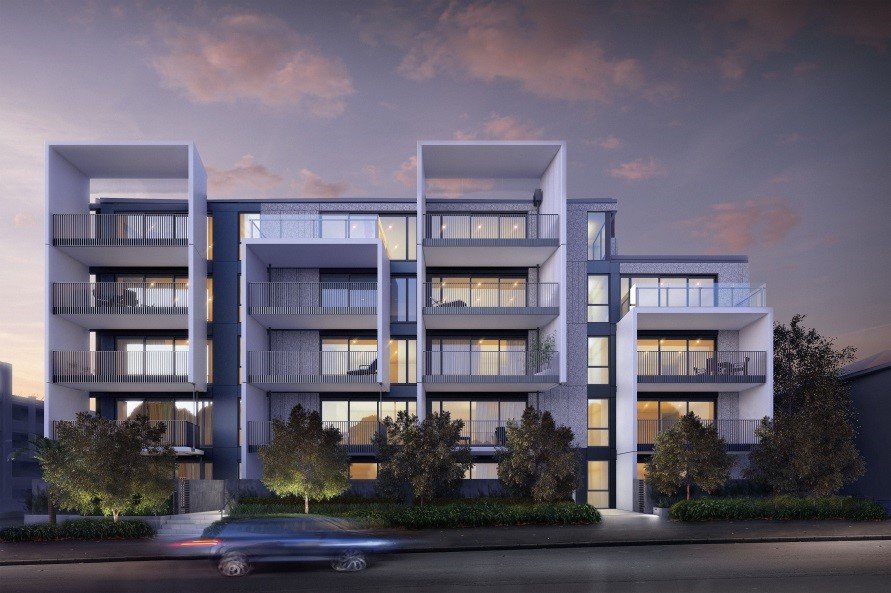
But the apartment building boom in Auckland, Melbourne and Sydney represents a race between two competing extremes. On one hand, some developers are producing characterless projects to catch the current wave of undersupply. Many of these pro-forma developments can be described as ‘housing product’ – space that may be relied upon to be waterproof and somewhat ‘affordable’ – but often not much more.
On the other hand, there is a genuine search, in all of the above cities, to find something unique that will extract a higher quality of experience – and higher value – from the same square metre-age. These two approaches taken to polar extremes are a race to high-quality urban environments, such as seen in Copenhagen, or towards the depressing uniformity of Soviet slab housing.

And things are getting better and worse at the same time. Our city skylines are diverging as two modes of design and development race towards an invisible finish line where demand balances supply. This is inconvenient for human commentators as we search for black and white answers to grey questions. The fact is that it’s not easy to say whether we are making things better or worse. But let’s be optimistic. In Auckland, recent mass housing design sins are being gradually countered by adventurous and encouraging work at Wynyard Quarter and elsewhere. In Melbourne, colour-by-number blocks are being balanced by new and exciting work both in the centre of the city and in the finer fibres of the inner suburbs.
One response to the Soviet-Copenhagen axis is to immediately cite cost, assuming that high-cost apartments have the right to be better than low-cost living – a kind of Darwinian natural order in which costlier apartments have better genes. Yet it is possible to compare two apartments of identical size and cost and find that one provides greater amenity, carefully considered planning, high-quality materiality and a real connection with the community while the other delivers anonymity, a series of living compromises and a matrix of ownership risks rendering them sale-proof for everyone other than the original developer.

It’s not hard to tell the two models apart and easy to decipher the central problem. Good apartments are simple and well planned, delivering a clear identity for owners. Bad apartments are overly complex with convoluted planning to compensate for the absence of a central design concept – and they are anonymous. Good apartments are driven by developers who are prepared to move beyond a dated formula to provide a better targeted offering. They work with architects that are able to think around the curve of the future, imagining what their cities will be ready for in the future. In this sense, these developments are creating a new future. The irony, of course, is that this process of looking into the future is more satisfying and commercially more rewarding whereas looking backwards, like looking down, is intrinsically dangerous.
Looking forward also means looking at history and context. Sometimes contemporary planning answers and historical context can work together in harmony and sometimes the contrast between old and new provides a powerful starting point for design. The Stanley Street apartments in Collingwood, Melbourne, for example, were influenced by the industrial brick buildings of the past and broke away from the formula of many apartment buildings in the area which used light facades relieved only by colour and pattern.

At Stonefields in Auckland our first building, Altera completely reconsidered apartment access and planning. By simplifying internal planning and using a ‘distributed core’ with several street entries as opposed to the traditional model of a single centralised entry with connecting ‘breezeways’ for low rise, medium cost apartments, high quality apartments. Complexity was edited out to allow increased quality for the end owner. Altera has been followed by other low rise apartment buildings, each exploring efficiency of planning and access as a tool to deliver better apartments and better living environments within a relatively affordable range.
 Of course, more expensive projects for buyers with larger budgets offer different opportunities – but not that different. And high rise projects and projects with larger, more luxurious apartments can still be ruined by overly complex, convoluted planning, an uncontrolled materials palette or obsessive decoration rather than a strict policy of ‘editing down to quality’. So in the real world of delivering beautiful living environments in a competitive market, it’s all about priorities. And it’s also about choosing ambition over complacency. Regardless of the target demographic and underlying commercial realities, it is possible to create a ‘project story and concept’ that reflects the physical and cultural location as well as the pocketbook of the market.
Of course, more expensive projects for buyers with larger budgets offer different opportunities – but not that different. And high rise projects and projects with larger, more luxurious apartments can still be ruined by overly complex, convoluted planning, an uncontrolled materials palette or obsessive decoration rather than a strict policy of ‘editing down to quality’. So in the real world of delivering beautiful living environments in a competitive market, it’s all about priorities. And it’s also about choosing ambition over complacency. Regardless of the target demographic and underlying commercial realities, it is possible to create a ‘project story and concept’ that reflects the physical and cultural location as well as the pocketbook of the market.





